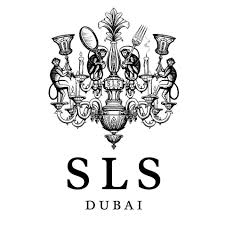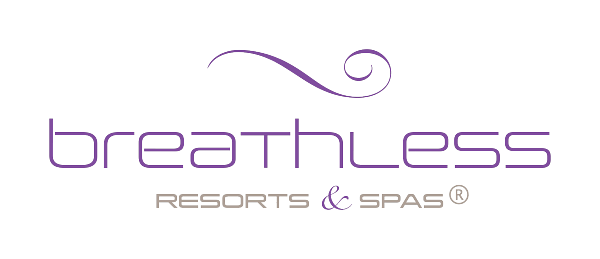Title Page
-
Company Name
-
Company Representative Name & Title
-
Audited by
-
Conducted on
-
Location
-
Audit Score - Rejected: 55 % below | Fair: 55-75% | Good: 75-90% | Excellent: 91-100%
1. General Site Standards
-
1.1 Is there restricted access to the facility/ visitors policy?
-
1.2 Does the external and internal environment pose a contamination risk?
-
1.3 Is the structure of the premises HACCP compliant?
1.3.1 Building
-
1.3.1.1 Walls/Ledges/Coving/Joins/Roof/Ceiling
-
1.3.1.2 Floors/Drainage/Doors
-
1.3.1.3 Beams/Vents/Guards
-
1.3.1.4 Windows/Hatches/Ventilation/Extraction
-
1.3.1.5 Lighting (well lit and covered bulbs )
-
1.3.1.6 Minimal amount of wood
2. Personal Hygiene, Handling Techniques and Staff Training
-
2.1 Are all staffs wearing appropriate protective clothing? (hairnets covering)
-
2.2 Is there adequate provision of WHB’s (wash hands before) throughout the facility?
-
2.3 Are the staffs’ personal habits doesn’t pose a contamination risk?
-
2.4 Are personnel not wearing jewelleries and accessories that may cause physical contamination on the food?
-
2.5 Are all staffs received food hygiene training commensurate with their designation within the company/ HACCP Team?
-
2.6 Is there a designated area for smoking, eating and drinking in the facility?
-
2.7 Is there a disease control policy in place?
-
2.8 Are First Aide Facilities available?
3. Cleaning & Disinfection
-
3.1 Is there a robust cleaning schedule adhered to within the facility with approved cleaning chemicals to be used?
-
3.2 Does the facility appear clean and well maintained at the time of inspection
-
3.3 Is there a separate designated washing area for equipment and utensils?
-
3.4 Staff handling chemicals are trained: training documented and enforced
-
3.5 Is there enough room to clean behind objects such as pallets?
-
3.6 Are staff areas changing rooms etc. clean and well maintained?
4. Storage
-
4.1 Are the storage areas clean, ventilated, well maintained and appropriately stacked?
-
4.2 Is there sufficient provision of chilled, frozen and dry storage facilities?
-
4.3 Are all goods protected from contamination risk and labelled?
-
4.4 Is FIFO or FEFO or any other system being followed?
-
4.5 Are there thermometers on all fridges and freezers and are they being monitored and recorded?
-
4.6 Are all cold stores at below 5 degree Celsius and all freezers at below -18 degree Celsius?
-
4.7 Is there a designated area for rejected/unfit product which has been clearly labeled?
-
4.8 Are all goods properly packaged and labeled?
-
4.9 Are chemical products stored in a separate and isolated area?
5. Production
-
5.1 Are the products protected from contamination at all stages?
-
5.2 Are there control methods (such as metal detectors) and other visual inspections to verify question 6.1 ?
-
5.3 Are there procedures in place to stop cross contamination?
-
5.4 Does the equipment and food containers suitably designed for effective cleaning?
-
5.5 Does product and staff flow does not pose risk?
-
5.6 Are unprocessed foods stored separately from processed food?
-
5.7 Is there a minimal amount of packaging in the production area ?
6 Pest Control
-
6.1 Is there an approved pest control contractor been assigned to the premises? Are all records in line with Municipality requirements?
-
6.2 Is there no evidence of pests at the time of inspection?
-
6.3 Are electronic fly killers and traps for pest available, clean and well maintained?
-
6.4 Regular Pest Control servicing is carried out.
7 Waste Management
-
7.1 Is there adequate provision of pedal operated bins within the facility, clean and well maintained?
-
7.2 Is external garbage storage area in accordance with Municipality guidelines, clean and well maintained?
-
7.3 Are there adequate measures to remove solid and liquid waste?
8. In Coming Deliveries / Supplier Checks
-
8.1 Is the condition of incoming stock checked including the measurement and recording of temperatures?
-
8.2 Is incoming stock put away immediately and stored appropriately?
-
8.3 Are suppliers premises audited regularly?
-
8.4 Are approved suppliers used and is this verified through conducting audits/HACCP information available?
-
8.5 Receiving area in good condition
9. Deliveries to Customers
-
9.1 Are the vehicles well maintained, clean and used only for food and non food deliveries as per the local municipalities rules & regulations?
-
9.2 Is there a documented pest control & disinfection program for the vehicles?
-
9.3 Do the vehicles have refrigerator/freezer units with an appropriate temperature gauge?
-
9.4 Are the drivers having validated health cards and basic food hygiene Training certificates?
-
9.5 Are there sufficient vehicles to meet 25 Hours Hotel delivery requirements?
10. Customer Complaints and Recall Procedure
-
10.1 Are complaints/issues being resolved in a timely and effective manner?
-
10.2 Are customer complaints records with corrective action taken available?
-
10.3 Is there a documented procedure for the effective recall and traceability of products?
-
10.4 Is there a corrective / contingency action procedure?
11. FSMS/HACCP
-
11.1 Is a HACCP plan or a Food Safety Plan based on HACCP principles being used?
-
11.2 Are internal audits conducted and records available?
-
11.3 Shelf life details of foods are followed. No Expired Items
-
11.4 Monitoring records are updated and doesn’t breach the critical limit
- Compliant
- Partially Compliant
- Non Compliant
- N/A
-
11.5 Are all temperature recording and equipment are calibrated on a regular basis by an approved company?
- Compliant
- Partially Compliant
- Non Compliant
- N/A
Completion
-
Recommendations/ Comments
-
Auditor's Name and Signature:
-
Supplier Representative Name and Signature














